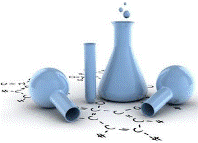Chemical and Biomolecular Engineering, Department of

Department of Chemical and Biomolecular Engineering: Faculty Publications
Date of this Version
2008
Document Type
Article
Citation
Langmuir. 2008 January 1; 24(1): 224–230.
Abstract
This paper describes a new class of salt-responsive poly(ethylene glycol) (PEG) self-assembled monolayers (SAMs) on top of polyelectrolyte multilayer (PEMs) films. PEM surfaces with poly(diallyldimethylammonium chloride) as the topmost layer are chemically patterned by microcontact printing (μCP) oligomeric PEG molecules with an activated carboxylic acid terminal group (m-dPEG acid). The resistive m-d-poly(ethylene glycol) (m-dPEG) acid molecules on the PEMs films were subsequently removed from the PEM surface with salt treatment, thus converting the nonadhesive surfaces into adhesive surfaces. The resistive PEG patterns facilitate the directed deposition of various macromolecules such as polymers, dyes, colloidal particles, proteins, liposomes, and nucleic acids. Further, these PEG patterns act as a universal resist for different types of cells (e.g., primary cells, cell lines), thus permitting more flexibility in attaching a wide variety of cells to material surfaces. The patterned films were characterized by optical microscopy and atomic force microscopy (AFM). The PEG patterns were removed from the PEM surface at certain salt conditions without affecting the PEM films underneath the SAMs. Removal of the PEG SAMs and the stability of the PEM films underneath it were characterized with ellipsometry and optical microscopy. Such salt- and pH-responsive surfaces could lead to significant advances in the fields of tissue engineering, targeted drug delivery, materials science, and biology.


Comments
© 2008 American Chemical Society. Used by permission.